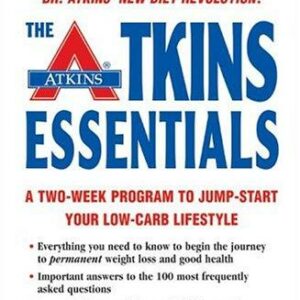Secrets of the Nanny Whisperer
$24.00
| Title | Range | Discount |
|---|---|---|
| Trade Discount | 5 + | 25% |
- Description
- Additional information
Description
The New Childcare Bible—A Must-Have Whether You Have Occasional Sitters or a Full-Time Nanny
Finding the right caregiver can be one of the most life-changing decisions a parent makes. Whether it’s a kindly neighbor for the weekday latchkey hours, a teenage babysitter one night a week, or a full-time professional nanny, the right caregiver can enrich a child’s world and literally grow her brain. Hire the wrong one, and this person could cause developmental delays and stress for the entire family.
In her groundbreaking new book, Secrets of the Nanny Whisperer: A Practical Guide for Finding and Achieving the Gold Standard of Care for Your Child, nationally recognized parenting expert Tammy Gold draws from her extensive background in child developmental psychology, social work, and family therapy to offer the first childcare bible for parents.
Knowing the impact caregivers have on children coupled with the unregulated often unknown world of in-home childcare workers, Gold has devoted her professional career, and now this book, to helping parents navigate through this important–and woefully overlooked–process. She arms parents with invaluable tools, tips, and insider secrets to finding the perfect caregiver-family match.
Gold’s Family Needs Assessment helps parents identify the traits and conditions that are “must-haves,” added “pluses,” or nonnegotiable “deal breakers.” Parents can then use this list of qualities to quickly weed out unqualified candidates. She also details what to ask over the phone and in a face-to-face interview, how to structure a trial run (which she deems essential), and what to spell out in a Nanny-Family Work Agreement–another essential tool included in the book. Readers learn her “Nanny Speak 1-2-3” technique to help clarify and resolve issues with the caregiver in a productive, positive way.
In addition to saving hours and energy, Parents will also discover as much about parenting as they will about finding a nanny. Secrets of the Nanny Whisperer is chock-full of parenting gems about children’s developmental stages, ways to nurture and stimulate the child, and essential strategies for maintaining harmonious and high-functioning parent-child-caregiver relationships. This book is a must read for parents who want to create a happier, healthier and safer childcare experience for their child.
”While many families view their nanny as part of the family, Gold reminds readers that this is ultimately an employment relationship. She dispenses exceptional advise that will help families avoid common pitfalls and is especially strong when illustrating scenarios from a nanny’s point of view. From her needs assessment to interview questions to problem-solving language, Gold’s examples and crisp narrative give readers one-stop shopping for nanny know-how. A required purchase. Well done.”
—Library Journal
“Parents setting out on the nanny quest will surely benefit from this practical handbook.”
—Publishers Weekly
“All new parents contemplating in-home care will think The Secrets of the Nanny Whisperer is a godsend. It offers good sense, reassuring advice, and detailed instructions on how to find and keep a good nanny—probably the most important decision you will make in your child’s early life.”
—Anne-Marie Slaughter, author of The Idea That is America
“Seeking a nanny who will be in sync with your family and life style? Here’s how. Your children — and their developing brains and bodies — will thank you for heeding this book’s excellent advice.”
— Carol S. Kranowitz, M.A., author of The Out-of-Sync Child
“Secrets of the Nanny Whisperer is a godsend for parents looking for a caregiver who not only tends to their child’s basic needs, but nurtures the whole child–mind, body, and spirit.”
—Patricia Gale, Seattle Post-Intelligencer
Tammy Gold, LCSW, MSW, CEC, is the founder and president of Gold Parent Coaching LLC. A pioneering resource for parents, Gold Parent Coaching offers one-on-one coaching on every aspect of parenthood, from sleep training to discipline, to work-life balance, but specializes in Nanny-Family Matching, Training and Mediation. Tammy’s highly successful approach to finding and hiring nannies has led her clients to call her “The Nanny Whisperer” and earned her recognition as one of the foremost nanny experts in the country. Following the recent Krim nanny tragedy in New York City, she was the go-to person for the media, appearing in People and The Wall Street Journal, and on CBS News, AOL News, and the Associated Press talking about ways to protect your children and hire a good nanny.
Tammy has been featured in more than 200 magazine and newspaper articles worldwide and appears regularly on television shows including Good Morning America, ABC News, CBS News, MSNBC, and Parents TV. She is a permanent parenting expert for MommyCoach.com, TheBump.com, and Howcast.com, and writes regularly for websites including Urban Baby and The Huffington Post. In addition to coaching private clients, Tammy has given hundreds of lectures to families, nannies, and working mom groups about the right way to go about finding a nanny. Her “Nanny Know-How” lectures draw up to 100 attendees, are sponsored by popular parenting brands such as Mommybites, and have been hosted by major companies in the New York Metro area including UBS.
INTRODUCTION
Welcome to Secrets of the Nanny Whisperer. My name is Tammy Gold, and today is the day that finding the perfect nanny for your family just got easier. Whether you’re a first-time parent or a mother of five, whether you work seventy hours a week or twenty, hiring someone to help you care for your most precious possession—your child—can be an incredibly daunting task. The good news is that it no longer has to be. You’ve picked up this book, and I’m here to help.
In many ways, my life has always been about helping parents and their children. After college, I received my master’s degree in social work from Columbia University and began working as a therapist for at-risk children in a New Jersey school. It was while working with these kids—many of whom suffered from neglect and abuse—that I witnessed firsthand the effects that poor caregiving could have on a child and the critical link between healthy, effective parenting and a child’s social, emotional, and intellectual development.
As a student at Columbia, I had been very interested in attachment theory, which is the science of how early caregiving influences a child’s life. First developed by the British psychiatrist John Bowlby, attachment theory asserts that for an infant’s social and emotional development to occur normally, the child needs to form a close, trusting relationship with at least one primary caregiver during infancy and the earliest years of life. Other well-known theorists such as Mary Ainsworth and Erik Erikson confirmed Bowlby’s research with a number of landmark studies that showed conclusively that the earliest bonds formed by children with their caregivers have a tremendous impact. A mother who is available and responsive to an infant’s needs establishes a sense of security and creates what Ainsworth called a “secure base” for the child to then explore the world. Erikson argued that a child’s entire identity is shaped by an early sense of “trust vs. mistrust,” depending on whether his caregivers reliably respond to his needs and provide constant care and affection. In short, infants and very young children need to establish strong relationships with loving, devoted caregivers in order to grow up to be emotionally healthy, happy, stable adults.
It was also around this time that I gave birth to our first daughter, Braydin. After years of dreaming about having my own children, motherhood didn’t turn out to be as easy or straightforward as I’d expected. Braydin was extremely colicky, so instead of sharing all of these beautiful Pampers moments with my new baby, she cried constantly, and I was a wreck. The pediatrician had no answers, and I just kept thinking to myself, “How is it possible that I had no preparation for this?” I was exhausted and overwhelmed, and worst of all, I felt like I was failing as a parent. Here I was, a childhood therapist, and I had no idea how to help my own child!
Eventually, through my own research, I figured out that Braydin had reflux, and once I switched her to a hypoallergenic formula, she was a new baby. But the experience made me realize that all parents occasionally need help to be the best caregivers they can be—even those, like myself, who have experience with children. When my maternity leave ended, I decided to start my own business devoted to giving moms and dads the support and tools they need to be better parents, particularly in the early, developmentally crucial years of a child’s life. Because I had studied attachment theory and child development, I knew that there was, in fact, an essential formula for raising happy, well-adjusted children. I wanted to share this information with other parents, so I started taking on clients and the business grew.
But then something unexpected started to happen. I was working from home and had hired a nanny, Maria, to care for Braydin while I was with my clients. After those first rough months with a colicky baby, Maria was a godsend. She was warm and lively and full of energy, always willing to jump in and do whatever was needed. She was fantastic with Braydin, always singing and playing and loving, and she was a huge support for me as well while I learned to juggle motherhood and my career. Even my friends noticed that Maria was providing our family with a whole different level of childcare, and they started asking me, “How did you find your nanny? I’ve never seen a nanny like that before.” Or saying, “I wish I had a relationship with my nanny like the one you have with Maria,” because they saw that there was no tension or drama. Before long, they approached me to ask for help, saying, “I know this isn’t exactly what you do, but what we really need more than anything is a good nanny. Can you help us find someone like Maria?”
So I started helping my friends find their nannies, and I quickly learned that I approached the nanny-search process very differently from other parents. Most of them treated it like hiring a babysitter, and if the nanny could answer basic questions and had good references, they made an offer. But when I had hired Maria, I had instinctively employed all my skills as a social worker and therapist—that is, the ability to read people and assess their character and personality, as well as perform a candid self-assessment—to help me figure out the right fit for our family. I had used my knowledge of child development theory to think about what Braydin needed most at the time, and when I met with nanny candidates, my therapist training allowed me to pick up on subtle cues and spot red flags that most people didn’t see. I also realized that my relationship with Maria had directly benefited from my experience as a therapist working with both individuals and couples; by using proper communication techniques, I had been able to foster an extremely positive working relationship between us while at the same time motivating her to perform at a high level. Soon, in addition to helping my friends find great caregivers, I was being invited into their homes to help them communicate more effectively with their nannies and mend broken nanny–family relationships. I found myself on the front lines of the nanny–parent experience, gaining unique insights and information, and learning how to make the relationship work for both parties at every stage.
I also realized that the best childcare situations were defined by what I call Constancy of Care—that is, a marked continuity in terms of quality and style of care across all caregivers who are responsible for the child: mother, father, and nanny, as well as any babysitters or daycare workers. If the nanny was able to mirror the parents in terms of attentiveness and parenting approach, the child was always calm and happy, even when the parents left, because she never experienced a drop in the level of care or affection. By finding a nanny who was able to parent “like Mom,” or teaching the current nanny to mimic the parents’ caregiving style, mothers and fathers could be apart from their children while still creating the stability and close, consistent emotional bonds promoted by attachment theory. Helping parents achieve their own particular version of Constancy of Care, both during and after the hiring process, became a key part of my Gold Standard approach.
As time went on, and the word of mouth spread, my friends started calling me the “Nanny Whisperer,” and I decided to offer nanny–family matching and mediation as official services through my business. My first paying client was a new mom, Natalie, who worked in Manhattan and was about to leave her six-week-old daughter to go back to work. And it was through helping her that I truly understood just how life-changing these services could be. Here was this new mother, so vulnerable and overwhelmed and terrified of leaving her child. But when together we found her a wonderful caregiver, it made all the difference. She felt so much better about herself as a mom and about the life choices she had made because she was confident that her daughter would be getting the very best possible care while she was gone.
How to Use This Book
Whether you are about to hire a nanny for the very first time, or you currently employ a nanny, this book can help you improve your experience and achieve the Gold Standard of care for your child. Part 1 explains my approach and why the right family–nanny match is so important. It also introduces you to my unique way of thinking about nannies and childcare, so that you can truly understand what a nanny is and does and what you should expect from the relationship. It also explores the common myths and misconceptions about nannies that create problems between parents and their child’s caregiver. Part 2 presents my Gold Standard hiring process, which is designed to help you find your ideal nanny and includes my one-of-a-kind Family Needs Assessment as well as breakthrough approaches to screening, reference checks, interviews, and doing in-home trials.
Part 3 is all about managing the relationship with your nanny and resolving any issues or conflicts that may arise. If you already have a nanny but aren’t completely satisfied and aren’t sure whether you should stick with your current caregiver or start fresh, Part 3 is designed to help you bring out the best in your nanny and know which issues are fixable and which are a sign that it’s time to move on. Every child deserves the Gold Standard of care, and you have everything you need in these pages to achieve that exceptional standard of care in your own home.
In the years since I became the Nanny Whisperer, I have learned that what I do to help families is incredibly important. When I place a great nanny or mend an existing nanny–parent relationship, something magical happens. I’ve helped the mom be a better mother because she now has a true partner—she can be “on” with her children and then leave for work or go recharge at the gym or have coffee with friends, knowing that her child is in great hands. I’ve helped the dad because he can pursue his job with peace of mind, and I’ve helped their marriage by giving them both more time and energy to devote to each other. And I’ve helped the children the most because they’re being cared for not just by capable parents but by an extra capable adult as well—and everyone’s happy! Happy parents and a happy caregiver make for a double-happy child.
So how do we get you and your family to this happy place? Let’s get started.
PART ONE
Nanny Whisperer 101
CHAPTER 1
How (and How Not) to Achieve the Gold Standard of Care
One afternoon at one of my “Nanny Know-How” events in New York City, a young woman stood up and introduced herself to the group.
“Hi, my name is Karen,” she began. “And I just wanted to say that I am the poster child for how not to go about finding a nanny.
“Our daughter is six months old, and we started looking for a nanny, which was our first choice for childcare, several months ago. We thought we had plenty of time before I had to go back to work, but now I’m actually starting back at work next week, and our daughter is going to daycare because we never found the right person. We went about our search in completely the wrong way; we didn’t really know what we wanted, so we just started bringing people in and talking to them, thinking that we’d have an emotional connection with someone and that would mean everything else was right. We didn’t understand how uncomfortable talking about money would be, so we met with a ton of nannies without really discussing salary, and then when we finally found someone we liked, she said she wanted to be paid ‘off the books.’ We wanted to do ‘on the books,’ so after all that legwork, we couldn’t agree on salary and the nanny took another job.
“Now our daughter is starting daycare and I have to do the nanny search all over again. I’m here because, this time, I want to do it right.”
I immediately understood Karen’s experience, because it is typical of the way that most parents choose nannies: They feel their way through this most important process without a plan, and with only their gut instincts to guide them. But finding a nanny is no small task, and more parents face this challenge today than ever before. Whether you are East Coast or West Coast, urban or suburban, chances are that many of the parents that you know rely on some form of regular childcare. The number of families with two working parents continues to grow, and even moms and dads who chose to be at home or at home part-time often require an extra set of hands to keep up with the pace and demands of modern parenthood. In fact, statistics show that 50 percent of all U.S. children are in some type of formal childcare arrangement by the time they are nine months old. Finding the right person (or persons) to care for your child when you are not there has become every bit as essential as potty training and teaching the ABCs.
Yet while there are hundreds of resources available to tell you how to puree your own organic baby food or sleep train your toddler, there are almost none that teach moms and dads the right way to go about finding a nanny, or how to work with that nanny effectively. Many of my clients come to me as first-time parents because they are completely daunted by the nanny-search process—where to find a nanny, what to expect, and how much to pay—but I also get clients who, despite the best of intentions, have been through five nannies in two years and have no idea what they’re doing wrong. Most parents rely on advice from friends when conducting their search, but without a proven system or strategy to guide them, they end up making mistakes that set the stage for future problems: They prioritize the wrong qualifications, ask the wrong questions, and fail to zero in on what they, as a family, truly need. It doesn’t help that the nanny world is like the Wild West, completely unregulated and often under the table; there are no rules, there is no standardized training or hiring protocol, and there is no board or government agency to provide professional oversight. Anyone can advertise themselves as a nanny, and yet I have found that many parents do more due diligence when buying a car than they do when hiring their child’s caregiver.
Unfortunately, the stakes are higher than they realize. Science tells us that 90 percent of the human brain develops by age three, so any person who cares for your child during these formative years—be it a nanny, a babysitter, or a daycare worker—will without question shape your child’s personality. Young children, especially infants and toddlers, learn from their caregivers every minute of every day, which means that everything about your nanny—her demeanor, her physicality, and whether or not she will actively teach and engage your child—will have a direct impact on his or her social, emotional, and intellectual development. If the chemistry between the nanny and child isn’t right, if the nanny is bored or checked out, if there is high nanny turnover, or if the nanny–parent relationship is strained, there can be real and lasting consequences for the child. Especially during the early years, the difference between an exceptional caregiver and a mediocre one can be enormous.
That’s why I wrote this book. After years of working with families and their nannies, I have created what I call the Gold Standard process so that parents everywhere can finally have a surefire prescription for finding their perfect nanny and making a lasting match that will help their child thrive. No matter who you are, where you live, or what kind of nanny you’re looking for, this book gives you everything you need to achieve the Gold Standard of childcare: a loving, energetic, totally devoted caregiver who is ideally matched—both personally and professionally—to meet your unique needs and those of your child. My hiring process will allow you to take control, avoid mistakes, and hire the right person. And if you already employ a nanny and it isn’t perfect, the strategies in this book—based on my background in psychotherapy as well as my experience as a nanny–family mediator—can help you improve the situation and achieve a whole new level of success.
Starting today, I want you to set aside whatever you think you know about how to hire a great nanny. Forget what you’ve read online or what your friends have told you, because I can tell you from experience that most of the typical nanny-search methods don’t work. Many parents, like Karen, approach the process backward: They round up a random assortment of nannies referred to them by friends and friends of friends, interview the nannies first, decide which ones they like, and then try to figure out who can match their actual, logistical needs. Or they do what I call Nanny Speed-Dating: They pick a day, invite ten candidates to meet them at Starbucks, interview each one for an hour, and then hire the person they like best. I also know plenty of parents who don’t even bother to interview multiple candidates—they just hire the cousin of their best friend’s nanny, or a neighbor’s former nanny, because they don’t want to bother with an extensive search.
Unfortunately, all of these approaches are rife with pitfalls. The problem with the interview-first approach, as Karen learned, is that it wastes a lot of time. Unless you figure out your exact needs and job criteria at the outset, you will spend a lot of energy meeting with candidates who ultimately, for one reason or another, aren’t right for the job. No parent—especially an exhausted parent with a newborn—wants to spend any more time on their nanny search than is absolutely necessary. But if you try to rush things, as with Nanny Speed-Dating, you are not going to be able to gather sufficient information about each candidate to truly assess them and make the smartest choice for your family. Even referrals are not a sure bet: As many parents will tell you, referrals may mean a lot—or they may mean nothing. Just because a nanny was wonderful for your friend does not automatically mean she will be wonderful for you. You need far more information than can be gleaned from a single interview, a single day of meeting nannies, or a single reference to know whether a nanny is right for you and your child.
Avoiding the wrong match is also critically important. There are many mediocre and even bad nannies out there who will meet you armed with years of experience and decent references. Mediocre nannies often fly under the radar, and the truth is that many parents don’t actually know what their nannies are doing all day long while they’re at work. There are many supposedly good nannies who commit what I call “benign neglect”—that is, they do the physical aspects of the job, such as feeding and dressing, but neglect the emotional ones, such as playing, interacting, and being affectionate with the child. Nanny searches are tricky, because you’re not only trying to find the good nannies—you’re also trying to identify and weed out the bad ones.
Fortunately, that’s where I come in. Because I have worked with hundreds of parents and been present for all of their nanny-search ups and downs, I know what works and what doesn’t when it comes to making a successful match. The Gold Standard hiring process described in Part 2 takes all of my firsthand experience combined with psychological research and translates it into a proven system for finding a great nanny. If you have made mistakes in the past, don’t worry! My process is designed to help you attain the very highest quality of care—the Gold Standard of care—for your child.
The process starts with a detailed Family Needs Assessment, which draws on my background in psychotherapy and child development to help you to identify your wants and your needs. We then translate those needs into an actual job description, and use four key points of interaction—Basic Screening, Reference Checks, Interviews, and Trials—to match that description to a strategically selected pool of candidates who have a high probability of being exactly what you want. While many parents do these steps in some form already, the way we approach them is unique. The sequencing of the steps is also very important; for example, we do reference checks before meeting candidates face to face, because I know from experience that when the check is done correctly, what you can learn from former employers is far more telling than an interview.
I’ve had clients say to me, “Wow, your process is like a science!” I take that as a compliment, because the whole point of my methodology is that, when done correctly, it yields a predictable result. You owe it to yourself and your child to set the bar high, and that’s what this book is about. You can find your perfect nanny by following my plan.
Now that you understand why the process is so important, let’s learn about the other side of this match: the nannies.
CHAPTER 2
Understanding Nannies and How They Work
One day, I received a call from a woman named Alicia, who lived in Connecticut with her husband, John. She had recently given birth to their first child, and with only three weeks left on her maternity leave, she was faced with the task of hiring her first nanny.
“I’m stressed because I have no idea what I’m doing,” she told me. “I don’t know what I’m looking for, or where to begin. And I’m nervous because I didn’t grow up with a nanny. I don’t understand nannies, and I don’t even really want a nanny in my house—but I have to go back to work. Can you help me?”
We envision spoonfuls of sugar and everyone living happily ever after.
Many of my clients are first-time parents who come to me feeling a lot like Alicia. They’re anxious because even though they want to hire a nanny, they don’t know much about them, so they don’t know where to start. The nanny world can be confusing and mysterious: Nannies can be as different as night and day, and there’s no nanny degree or required certification. Parents are forced to make up the rules on the fly in their own homes, and as a result, they often have misguided notions or expectations about what a nanny should or shouldn’t be. It doesn’t help that for many of us, the nanny we’re most familiar with is Mary Poppins—so we envision spoonfuls of sugar and everyone living happily ever after and are disappointed when a real-world nanny fails to measure up. However, I can assure you that there are many, many wonderful nannies out there who, even if they don’t travel via umbrella, can be immensely loved by both you and your child, contribute to the joys of family life, and enhance your perspective on childrearing in remarkable ways. But first, you’ll need a good understanding of who they are, how they think, and what to expect from the arrangement.
This chapter is designed to give you an introduction to what I call “Nannyology”—the science of understanding nannies—and to give you a crystal-clear picture of what a nanny is and does, what the job actually entails, and how you should and should not approach the relationship. Nannies are human, and just like everyone else, they have strengths and weaknesses, surprising talents and funny quirks, and their own needs and expectations. You will most likely never find the perfect nanny who flawlessly performs every conceivable task. However, if you follow my hiring process and the strategies for working together that are detailed later in the book, you can absolutely find an amazing, real-world nanny who will be a great fit for your family.
A nanny is someone who cares for a child or children in a home on a regular basis during the parents’ absence. Nannies are usually responsible for everything to do with the care of the child, including feeding, bathing, sleep scheduling, laundry, and tidying up the child’s room or play areas. Nannies may also have additional responsibilities that help the family, such as errands, grocery shopping, cooking for the children, caring for pets, and light housekeeping. A full-time nanny will typically work forty to sixty hours a week, and part-time nanny may work anywhere from fifteen to thirty-five.
The biggest advantage to having a nanny is that your child will be cared for by a consistent, attentive caregiver in the familiar surroundings of your home. Aside from having a family member to care for your child, a nanny most closely approximates a parent, and depending on your situation, she may do everything that a parent does—from helping with homework to settling sibling disputes—when you’re not there. A nanny also gives parents maximum flexibility: You get to decide what hours and duties you need and then hire someone who fits the bill. Many nannies will even work extra weekend hours or travel with you on family vacations. The consistency and stability that a good nanny provides is ideal for young children, especially babies and toddlers, and in the best scenarios, the nanny becomes a member of your family who loves your children as if they were her own.
The downside is that nannies are by far the most expensive form of childcare. The average rate is $15 per hour, or $700 a week, depending on where you live, and the price goes up with each additional child. Like most employees, nannies expect a modest annual raise (50 cents an hour, or $25 a week) along with paid vacation days, sick days, personal days, and holidays. It is also considered good practice to give your nanny a bonus at the end of the calendar year (typically one to two weeks’ salary) or on her yearly anniversary with you.
The other factor to consider is that the nanny–parent relationship, while it can be rewarding in many ways, is utterly unique and not always easy. Even if you and your children adore your nanny, it can be strange to have another adult in your house so many hours a week and even stranger to hear that adult express authoritative opinions about your children and what they need. Most parents, even those who really like or even love their nannies, have a certain amount of ambivalence about the relationship, and it can be challenging to constantly walk the line between personal and professional, family member and employee. Negotiating that line comes with the territory, and when you hire a nanny, you will need to devote time and energy to the relationship (more about this in Part 3).
The Different Types of Nannies
There are many different types of nannies, and which kind you hire will depend on factors specific to your household, including the ages and number of the children, where your family lives, whether you and your partner both work full-time, and whether you employ any other domestic help. These various types include live-in and live-out, urban and suburban, as well as specific kinds of nannies that are further defined by their job duties and responsibilities. Let’s take a closer look at each of these types, and at how you will need to think about them as an employer.
LIVE-IN VS. LIVE-OUT
The first big decision that you will need to make when starting to think about who you want to hire is whether your nanny should be live-in or live-out. A live-in nanny is one who lives with the family in their home for some portion of the week, while a live-out nanny commutes to work each day and, after finishing her duties, returns home each night.
Live-In
Live-in nannies can be the least expensive kind of nanny because you are giving them room and board in addition to their salary. Some live-ins go home for some portion of the week, and some stay with their employer’s family full-time because they don’t have another residence. A typical work schedule for a live-in is five full days and nights on, and two days off each week. If you want additional days and hours, you will need to pay for the extra time. The big advantage of a live-in nanny is that you know you have round-the-clock coverage for those five days: If you and your spouse both travel for work, you have someone to spend the night; if your child is up all night with a stomach virus, you have someone on hand to help; and your nanny will never be late for work because of a snowstorm or the train broke down.
To have a live-in, you need to be able to provide her with her own private, furnished bedroom and bathroom, and it’s helpful if the space is somewhat separate from the rest of the family. Live-ins who drive also typically have a car at their disposal, either for transporting the children or for personal use; they also tend to cost more (average $750 a week) because live-ins who drive are the smallest percentage of nannies and thus are in high demand. A lot of parents don’t initially like the idea of having someone else living in their home, but live-ins don’t necessarily mingle with the family after their hours are done. You will want to map out your rules for privacy at the start so that everybody is comfortable. For example, do you want the nanny to go to her room at a certain time in the evening? Can she have a lock on her door so the children can’t go to her when she’s off duty? Can the nanny have a friend over or go out at night?
Live-Out
Most nannies are live-out nannies who will commute back and forth to your house each day. At an average rate of $15 per hour, they are more expensive than live-in, and a driving, live-out nanny will command $18 to $20 per hour or more. In general, live-out nannies will have less flexibility in terms of hours and schedules; they will expect to arrive at a certain time, work a set number of hours, and then leave at an agreed-on time as well.
There are some live-out nannies who occasionally live-in—for example, if the parents go away for a week, the nanny may come to stay with the kids, or if the family goes away for the summer, the nanny may live-in at the family’s vacation home for those few months. But this is something that needs to be discussed and agreed to by the nanny before you hire her. You should not assume that a live-out nanny is willing or able to do live-in, and I have seen many nanny–family relationships severed because the nanny felt that the pressure of being with the family 24/7—even in a beautiful apartment in Rome—was just too much.
THE KEY TO A SUCCESSFUL LIVE-IN ARRANGEMENT: PERSONALITY
Whether she’s going to be living in for a year or a month, a live-in nanny has to, by nature, be extremely adaptable and flexible. Live-in nannies don’t have much freedom, and they can get antsy because they’re stuck in the job for five straight days. A mellower, more accepting nanny will be fine with this, but a nanny with a stronger personality, who is used to working nine to five and likes plenty of autonomy, will have a harder time. I’m always wary when I interview a nanny who says, “I can do live-in; I’ve done live-out for twenty years,” because, more often than not, nannies who try to make the switch end up feeling suffocated and quitting because it’s such a big change.
Which Arrangement Is Best for You?
If you are still on the fence and have the option of doing either live-in or live-out, it really comes down to your needs as parents regarding those early-morning and after-work hours. If you both work sixty hours a week and travel extensively for your jobs, a live-out situation is very hard to make work. You can do it, but you may end up paying so much for extra, add-on hours and spending so much time arranging backup that it becomes a challenge financially and logistically. With a live-in, you’re saving money and you’ve got the coverage—anything can pop up, any situation can arise, and you’re not scrambling.
THE KEY TO A SUCCESSFUL LIVE-OUT ARRANGEMENT: RELIABILITY
I always tell my clients that live-out works best for families with at least one parent who has a fairly predictable schedule. If you both get held up regularly at the office, have commitments after work, or need to travel for business at a moment’s notice, you will need to make sure that your live-out nanny has the capacity and desire to cover you during those times. Live-outs themselves also have to be extremely responsible and reliable because they are susceptible to commuting problems due to weather and traffic, so you should factor this into your agreed-on start time and may want to have a backup in the wings just in case.
URBAN VS. SUBURBAN
US
Additional information
| Dimensions | 0.7000 × 5.4200 × 8.2500 in |
|---|---|
| Imprint | |
| Format | |
| ISBN-13 | |
| ISBN-10 | |
| Author | |
| Audience | |
| BISAC | |
| Subjects | psychology book, daycare, child care, adolescence, cognitive behavioral therapy, new moms, Child Development, relationship books, parenting book, child development books, work life balance, raising boys, child psychology, gifts for new mom, working mom, nanny cam, healthy kids, financial stress, nanny 911, Human nature, mental health, psychology, mindfulness, relationships, family, FAM034000, drama, parenting books, parenting, PSY004000, pregnancy, psychology books, mental health books, self esteem, discipline, attachment, emotional development |










